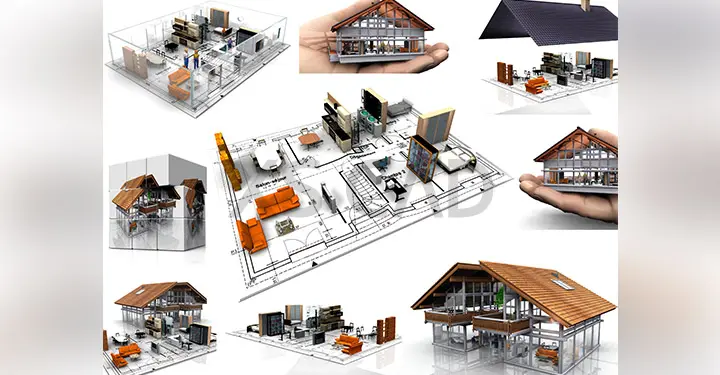Our Articles

Benefits of Revit Families for Residential Construction Drawings
Family benefits come in many forms, but Revit families provide particular benefits for the development of residential construction drawings . Most construction industry professionals have either heard of, or are familiar with, Revit models created with the help of Revit families. An architectural concept is represented in a drawing, which then contributes to creating a Revit file and a BIM (building information modelling) model. Information and drawings generated from BIM models help in the creation and compilation of residential construction drawings and construction documentation. So, how exactly does this happen?
Several elements contribute to Revit modelling. Revit families help keep track of these elements and their locations in the generated models. Building design drawings are labors of love, or just labour. They take time, consultation between project stakeholders and informed decisions. Revit software tools are utilised in MEP design, structural design and architectural design, where changes in one part of a Revit model results in automatic adjustments to other parts of the model. During this process, the Revit file encounters numerous modifications.
A Revit file consists of a variety of Revit families. Similar, related objects in a design are grouped together as Revit families. A dining table and its chairs could be grouped together as a family. When the table is moved to any new location, the chairs move with it and maintain their set distances from each other. In addition to furniture, walls, doors, windows, roofs, MEP components and other elements that have a common set of properties can be Revit families that are movable and easy to modify.
A Revit family is part of a library with readymade objects. Each Revit family has specific parameters and properties. The objects can be customised and used to develop CAD drawings or inserted into models. Families can be created individually and can be shared with project stakeholders. These families can be modified to help the accuracy of a model.
Revit families are part of a centralised data management system. Each Revit family can be further divided according to size, material, parameters, etc. into different types. If a family type is changed, the change will be automatically executed throughout the project where that family type occurs.
Classifications of Revit Families
System Families: Part of the in-built Revit family library, they include walls, roofs, floors, etc. and are integral elements to the Revit model.
Loadable Families: Not part of the Revit system family, these families can be loaded separately, as and when required. They can include tables, chairs, lighting fixtures, air terminals, sinks, beams and exterior elements, such as extrusions or driveways.
Annotation Families: These include dimensions, tags, instructions and other annotations not included in the 3D models and can be loaded when required.
Combinations of the various kinds of families in Revit 3D modelling help facilitate the eventual development of construction drawings or working drawings. All construction specifications of a residential home, including dimensions, materials, layouts, installation methods and techniques, are part of a set of residential construction drawings.
Residential construction drawings typically include the following:
As listed above, a full set of residential construction drawings consists of numerous individual drawings. Revit families allow the interaction of project components during the process of modelling and thus help develop individual drawings with detailed information about dimensions and layout.
Revit families can be inserted into models to develop accurate drawings. Using architectural and shop drawings, draftsmen and architects can create high-quality, error-free 3D construction drawings with the required Revit families.
Revit family data for Revit Architecture and Revit MEP can be used to create accurate BIM models, with physical and graphical elements and both technical and manufacturing information for residential Revit BIM modelling. These BIM models ensure ‘integrated bi-directional associativity’, which is the coordinated updates to corresponding, relevant areas in case of any changes in schedules, plans, elevations or sections.
The benefits associated with using Revit families include the following:
Revit families can help create accurate residential construction drawings with the help of precise residential drafting services. Qualified technical expertise to create these drawings takes experience and skill and may be expensive. Increasingly, solutions for accurate, error-free residential drafting services are being sourced offshore. Depending on the reliability of the concerned partners, offshore services, especially from India, may be a cost-effective and effective option for the development of residential construction drawings.

